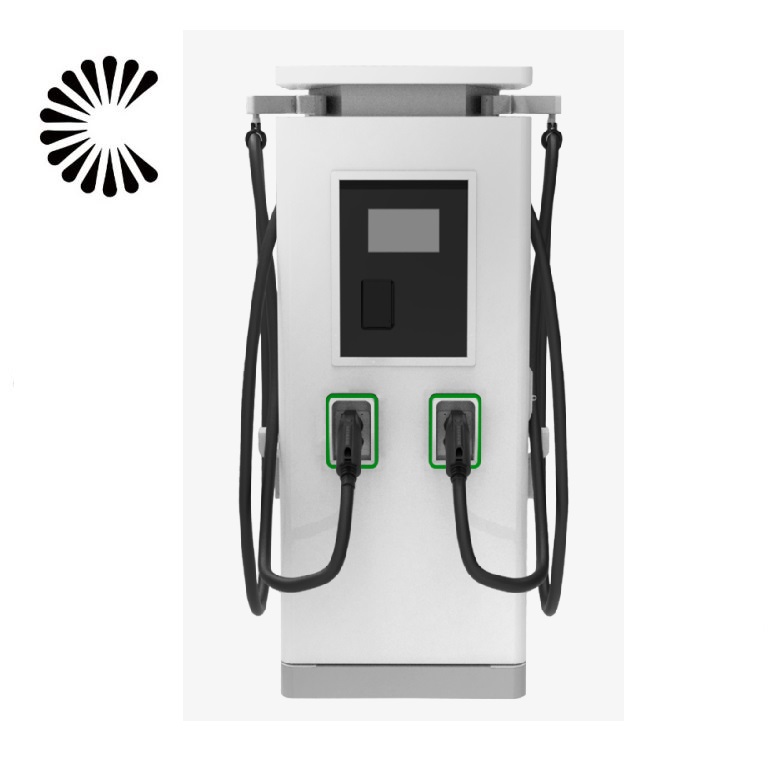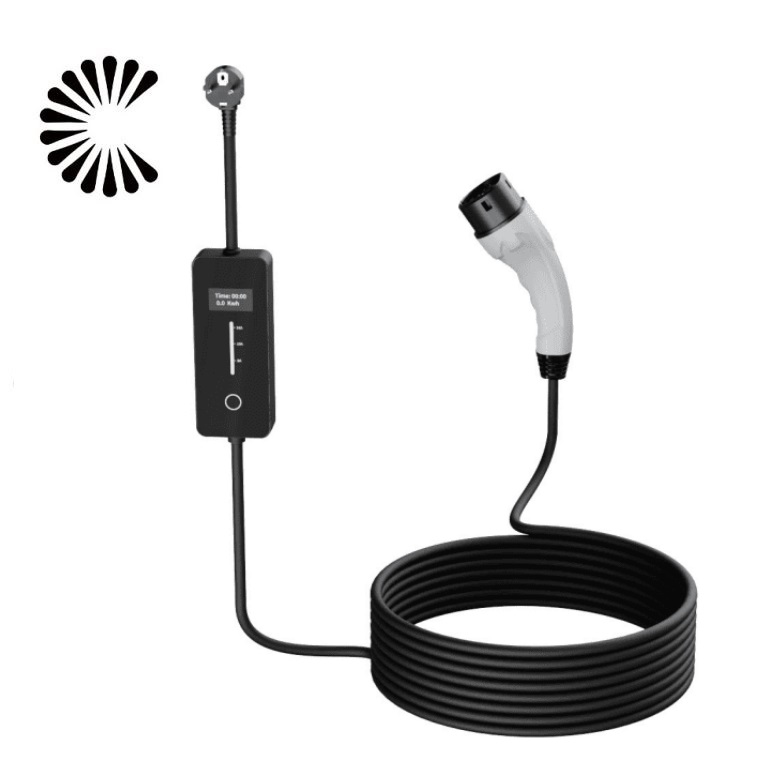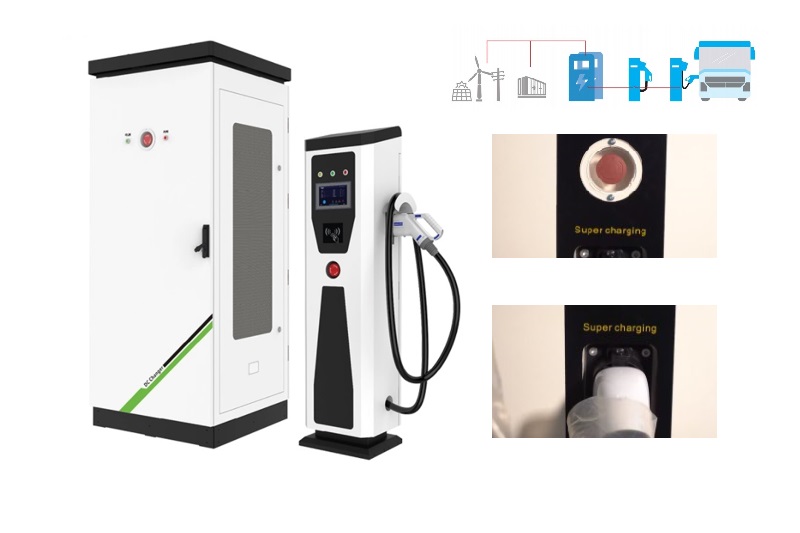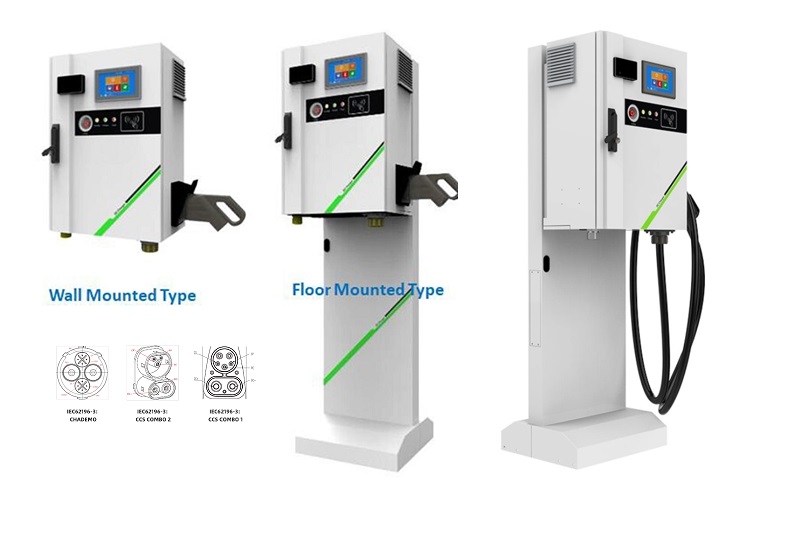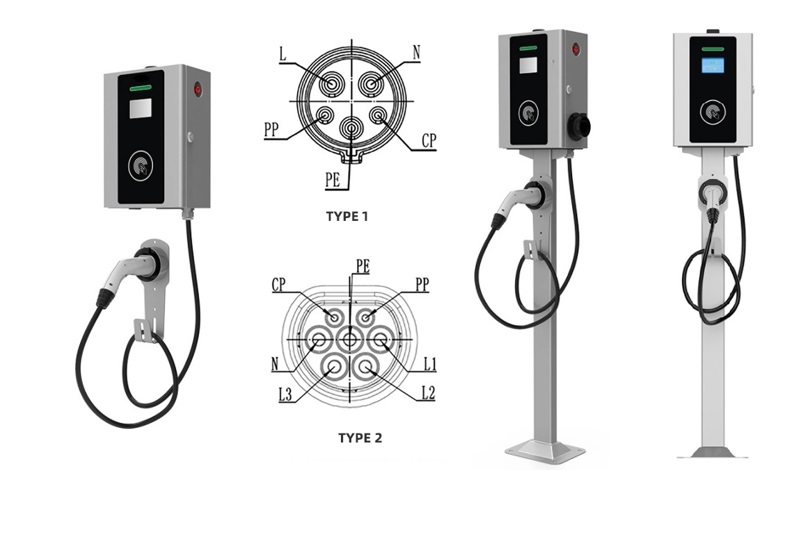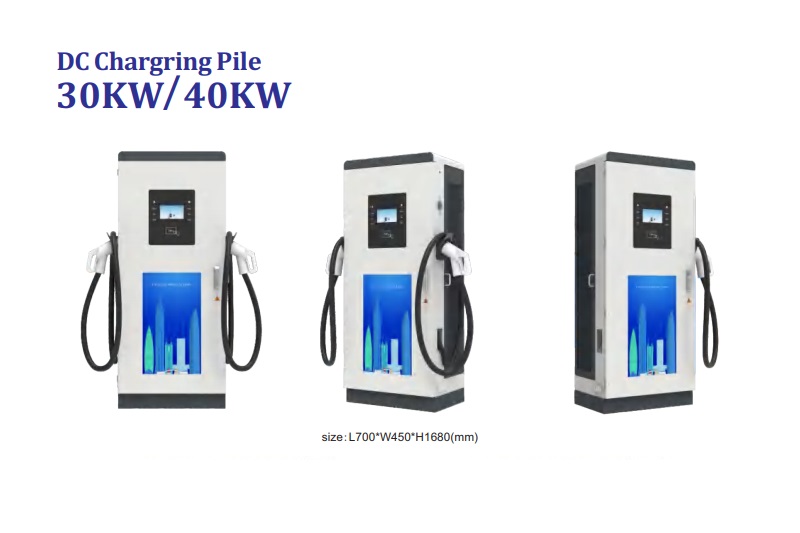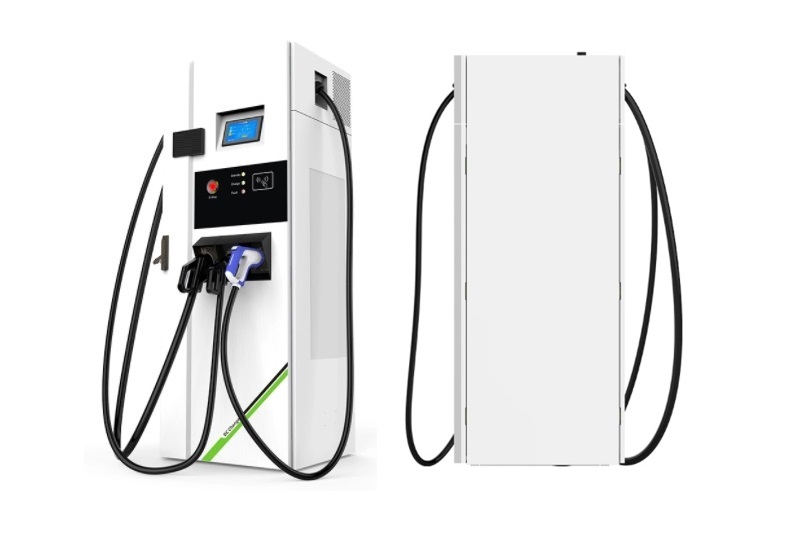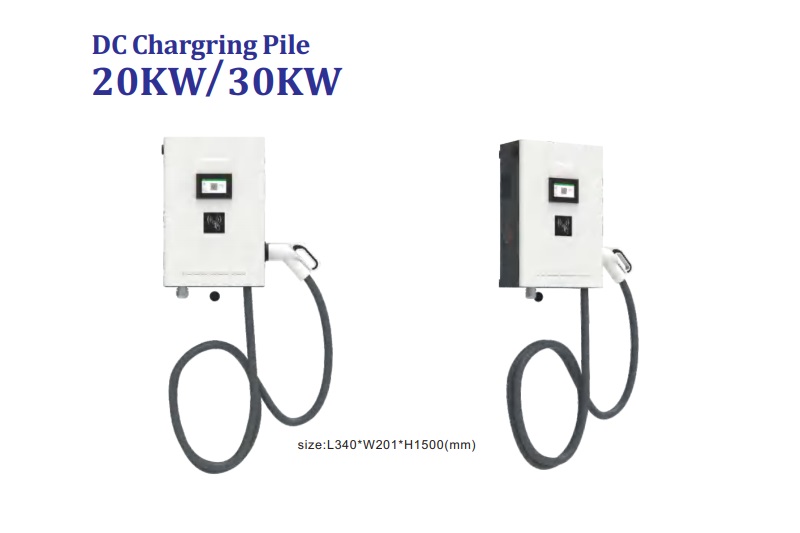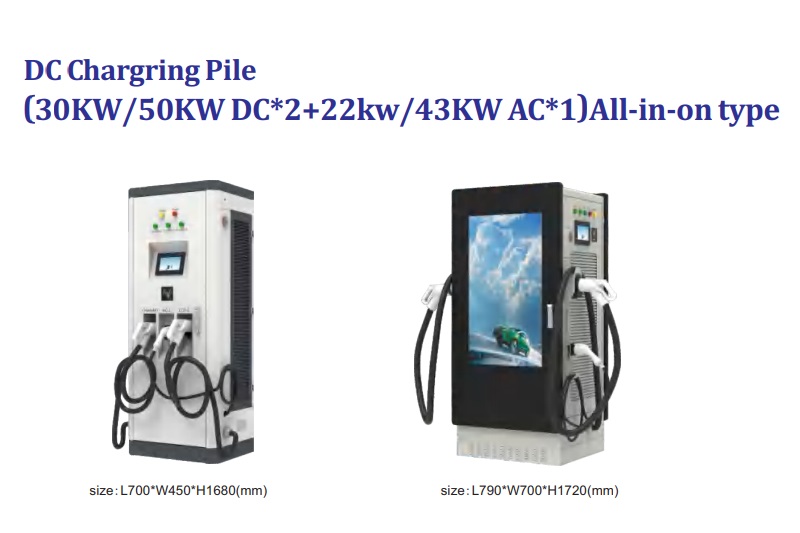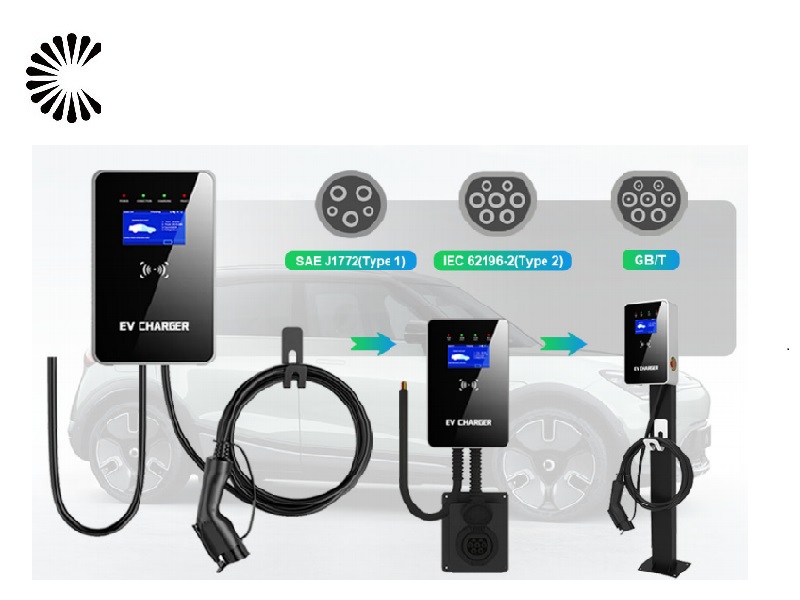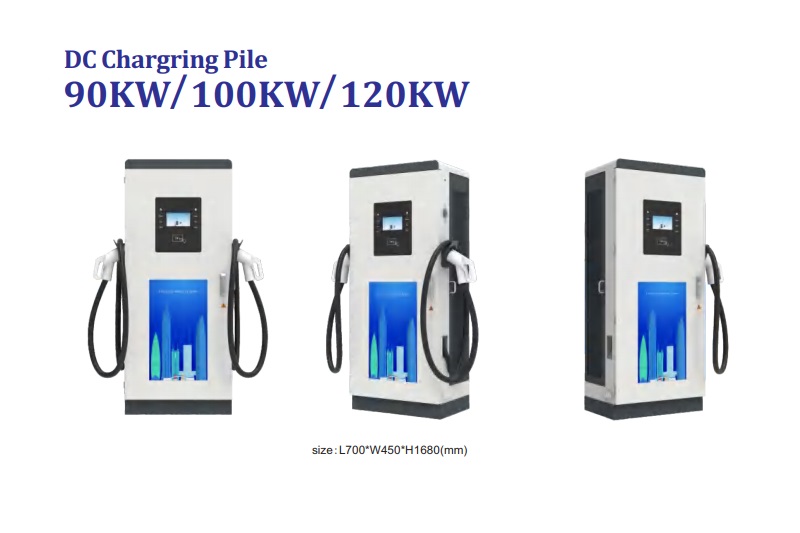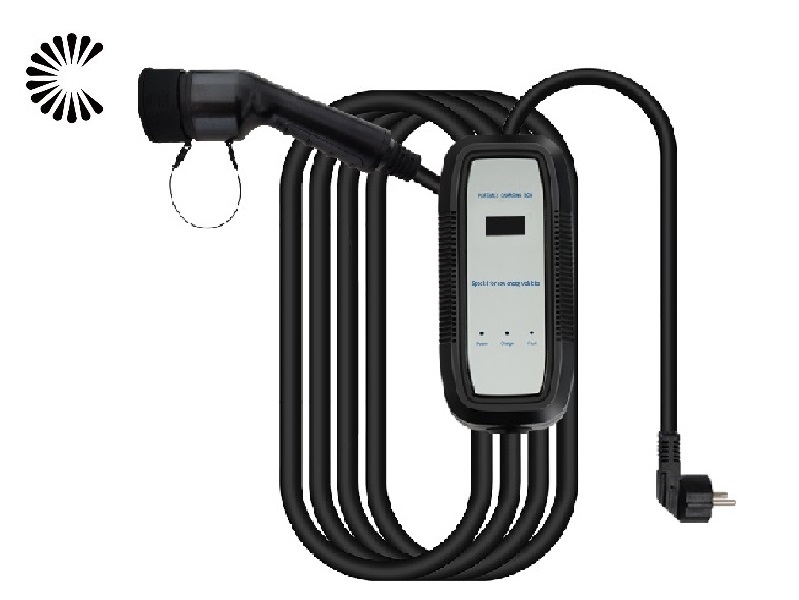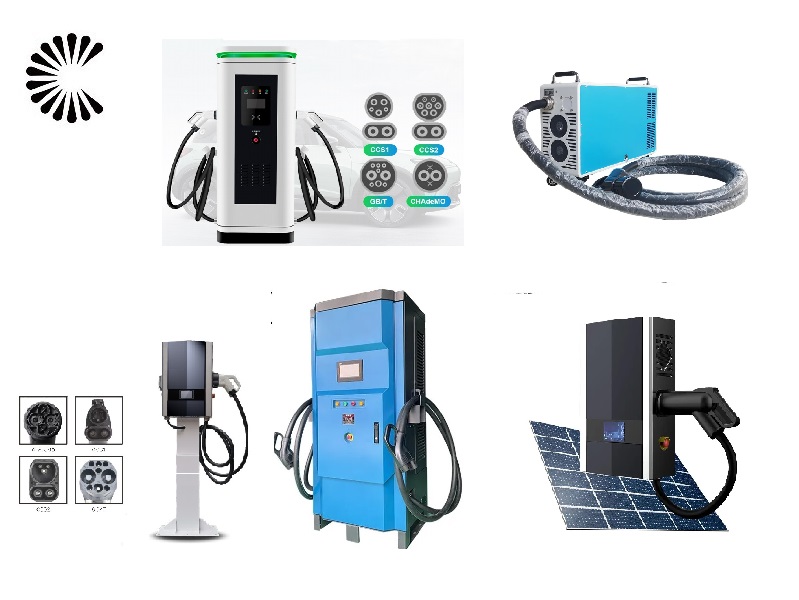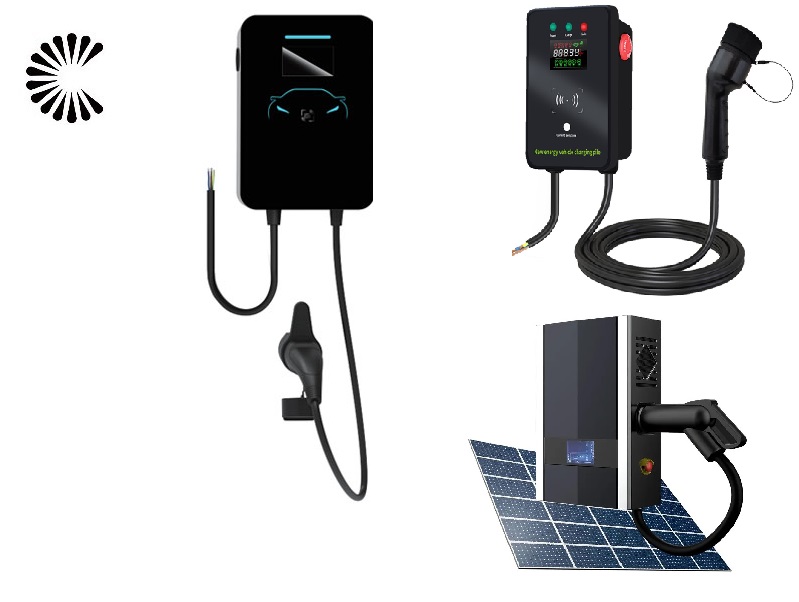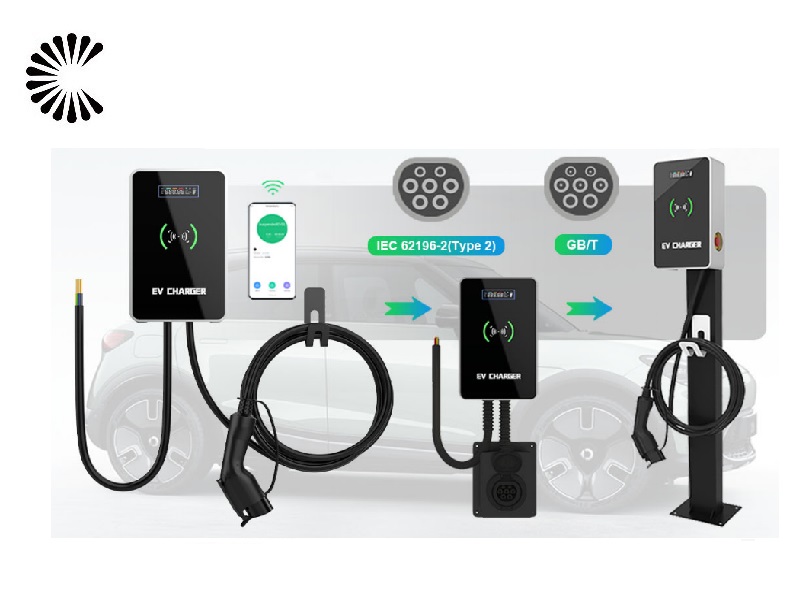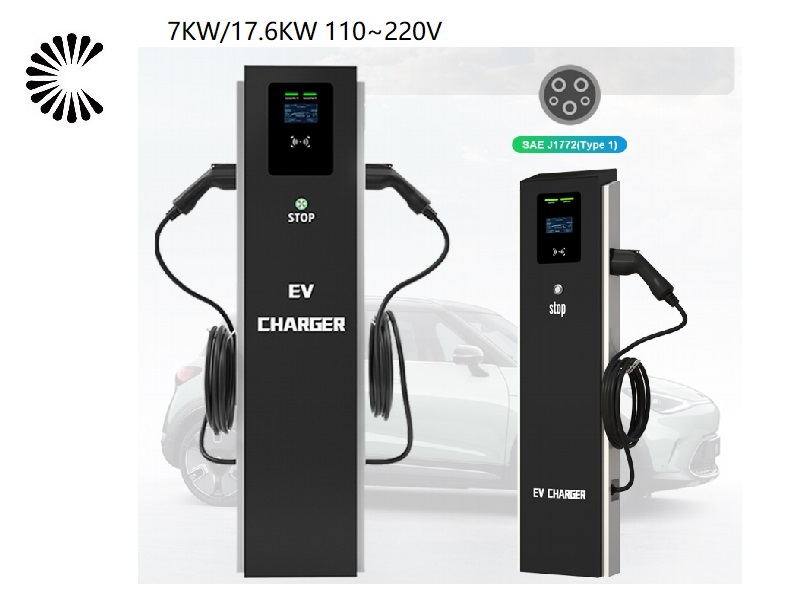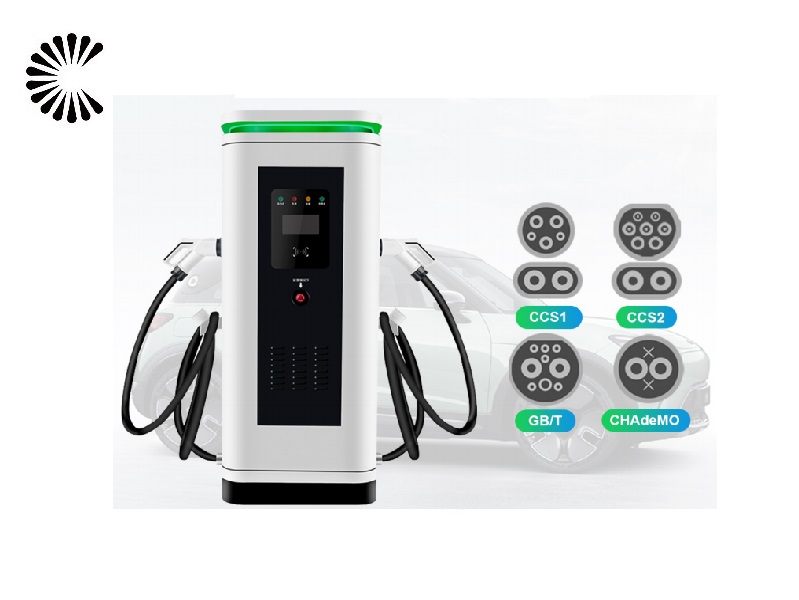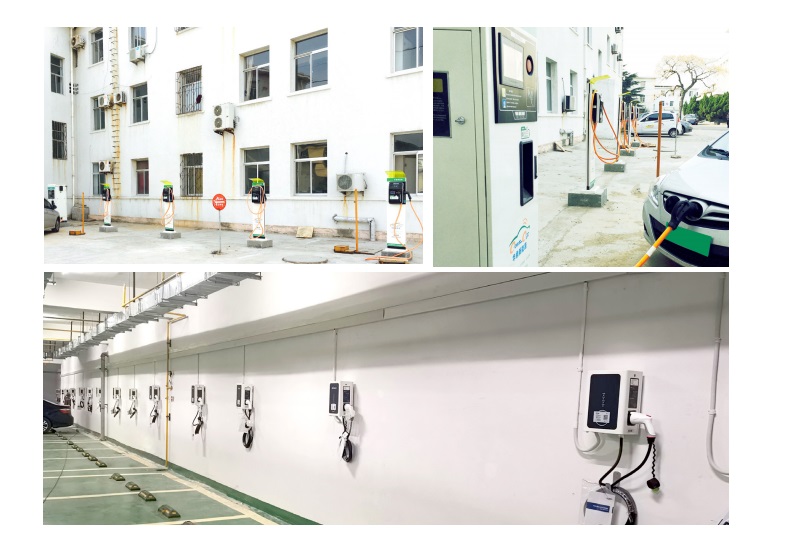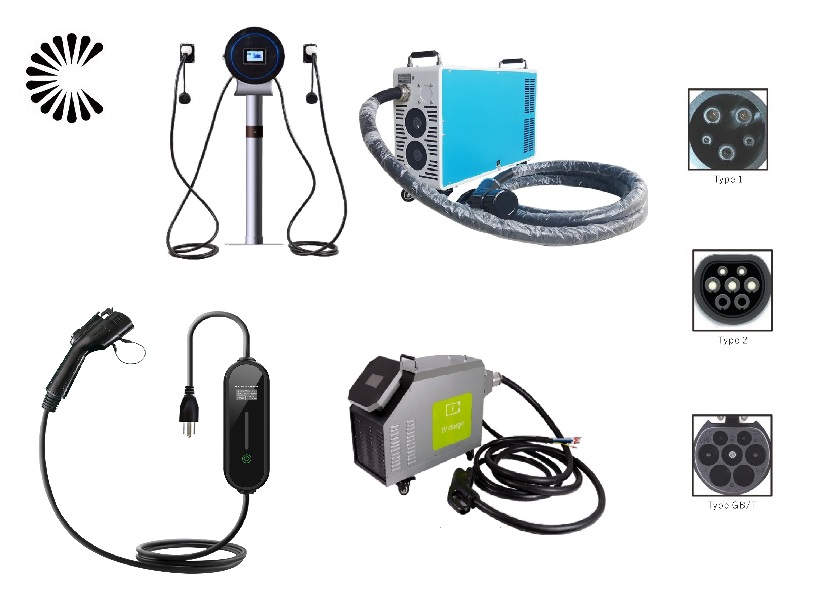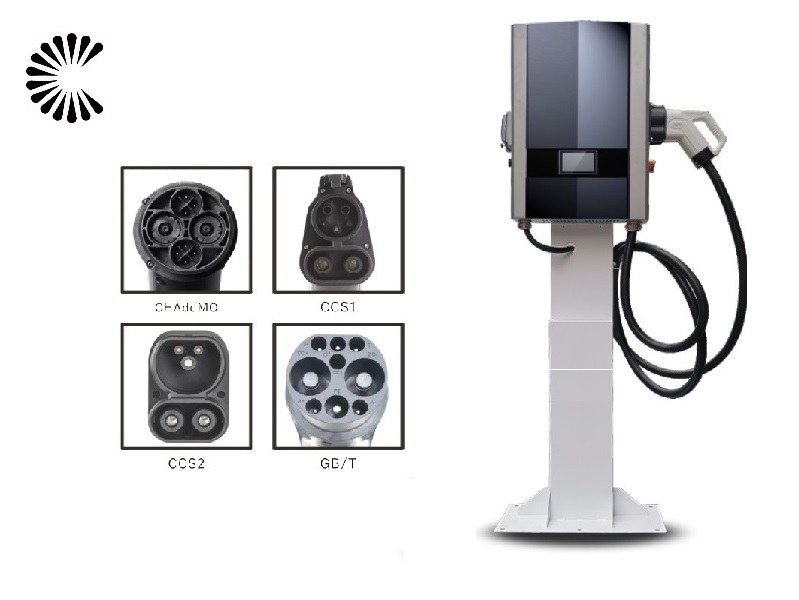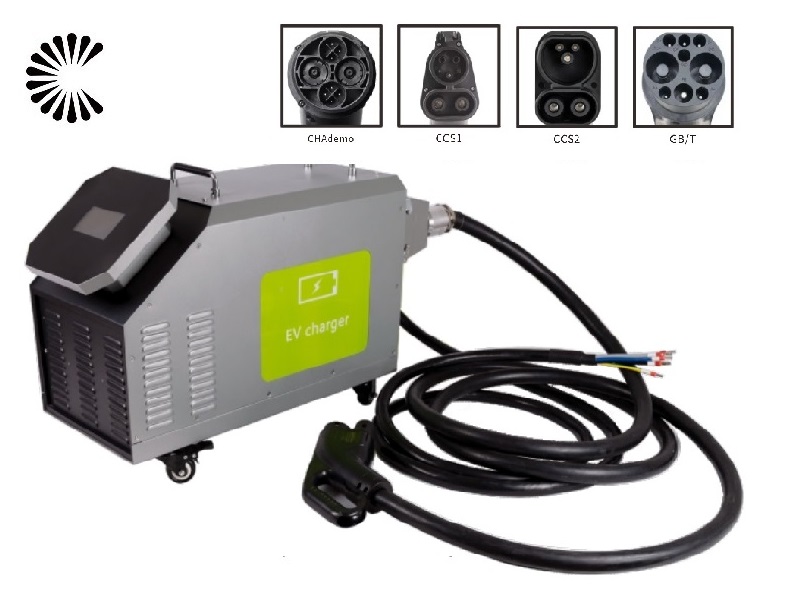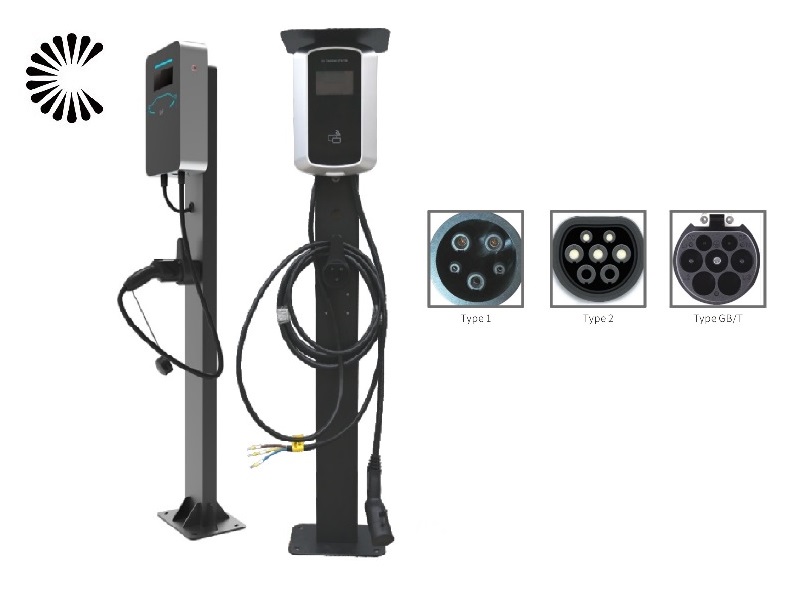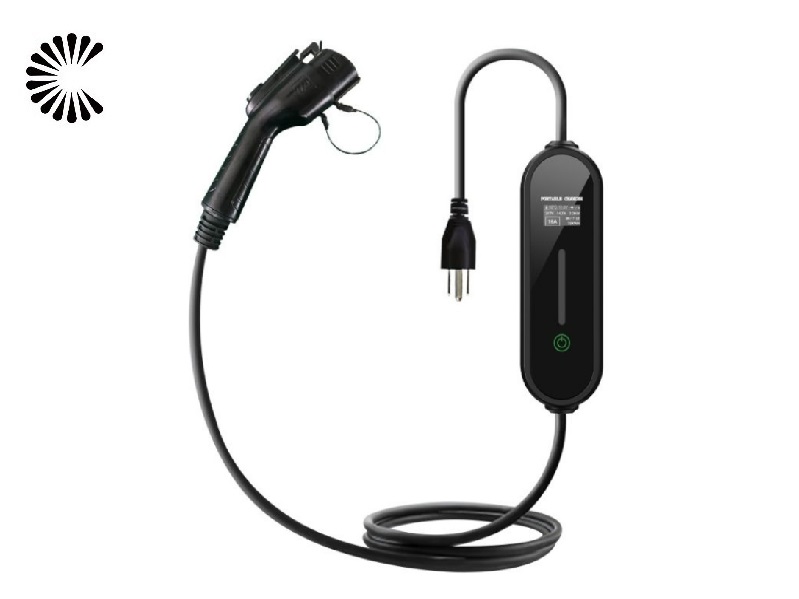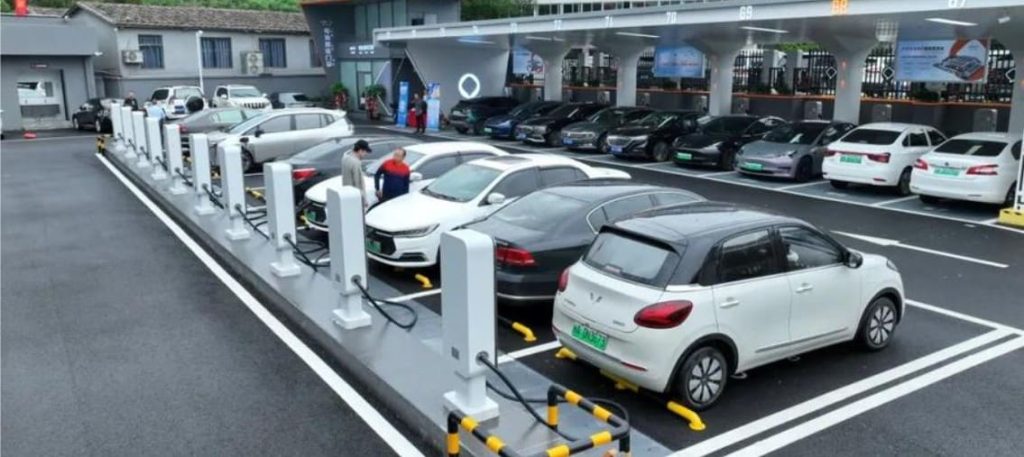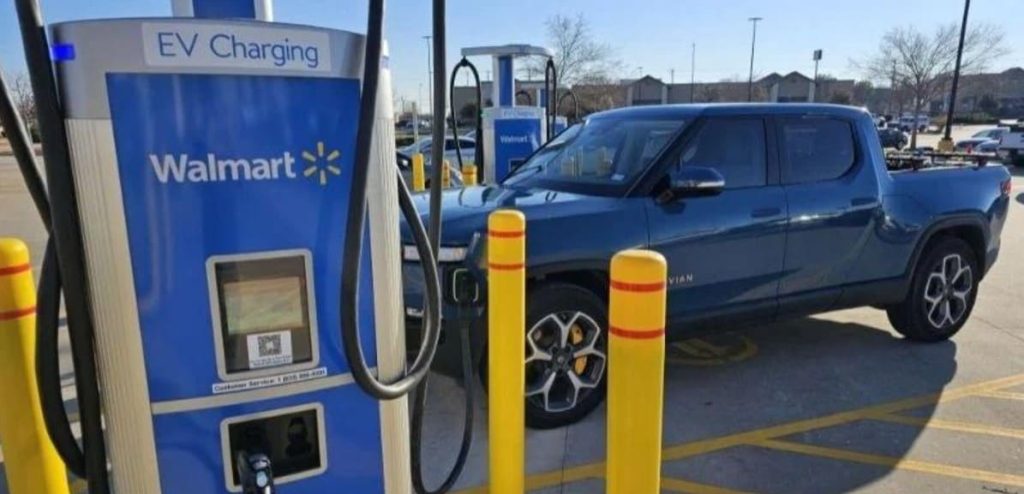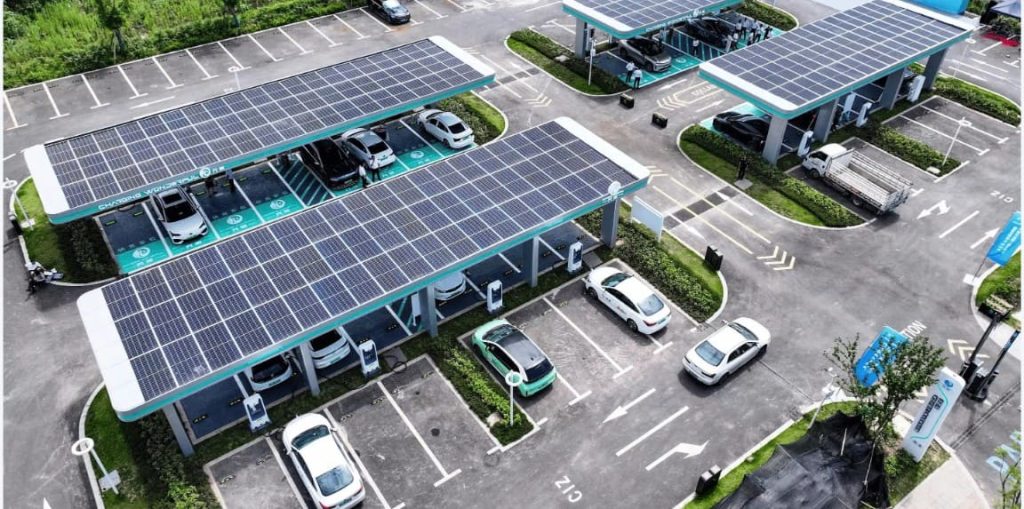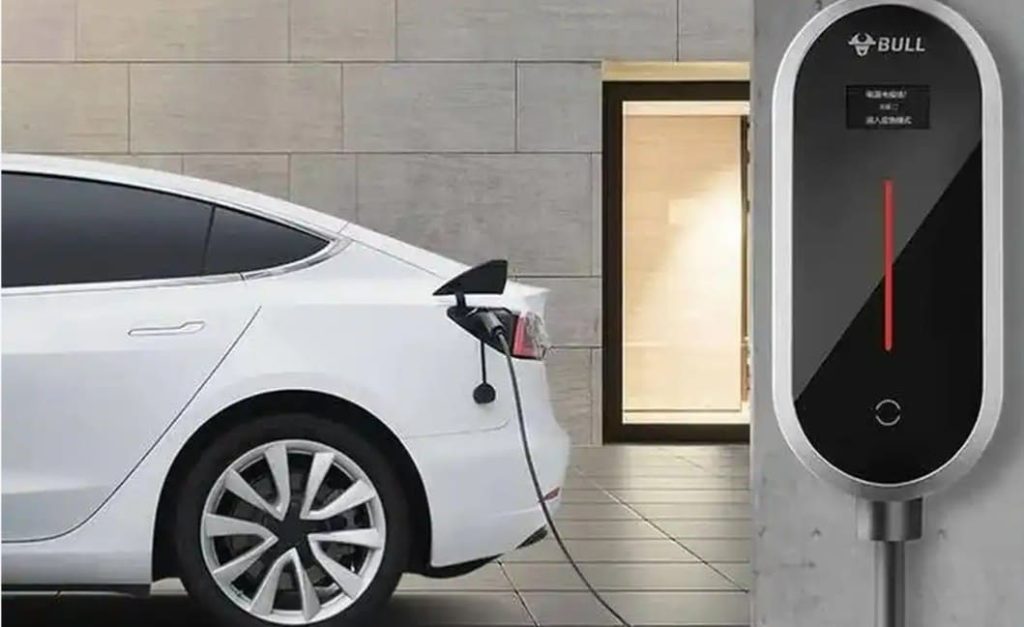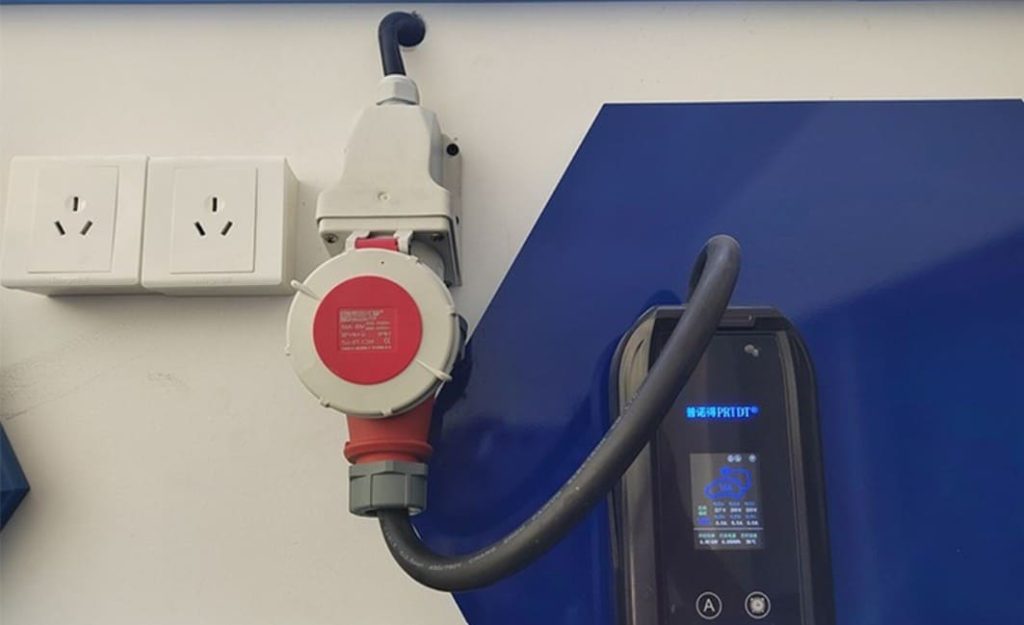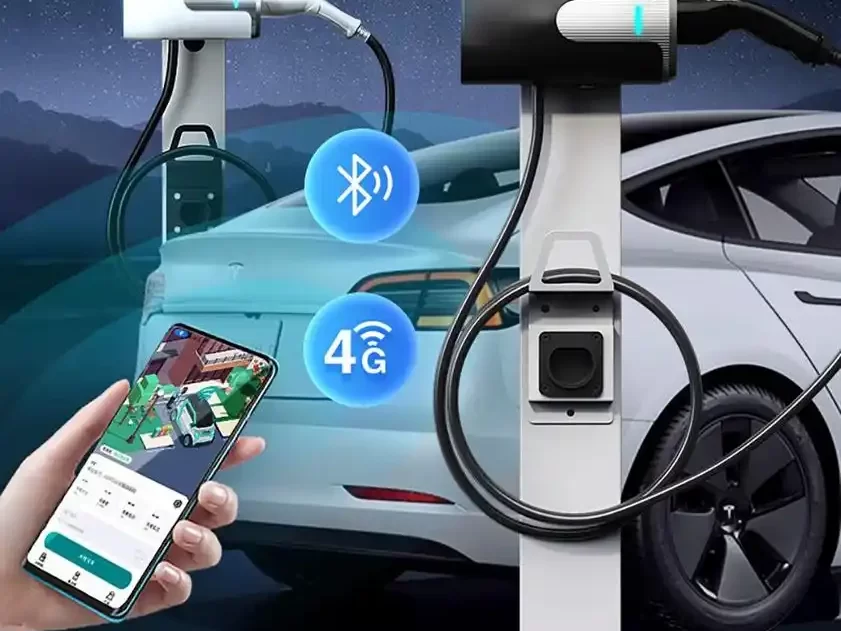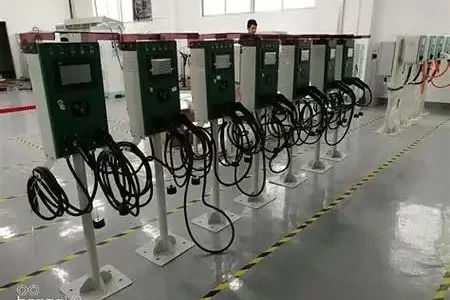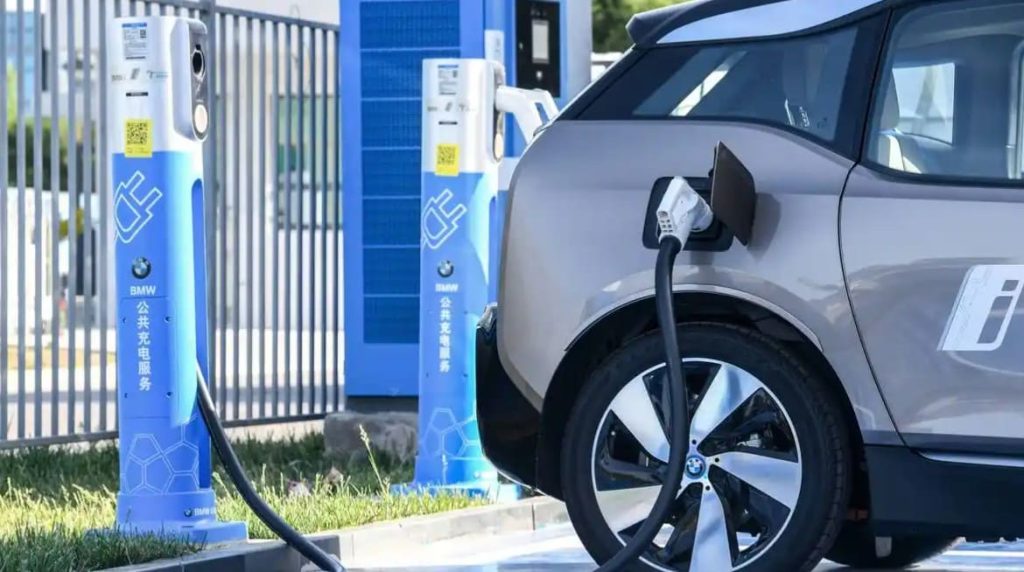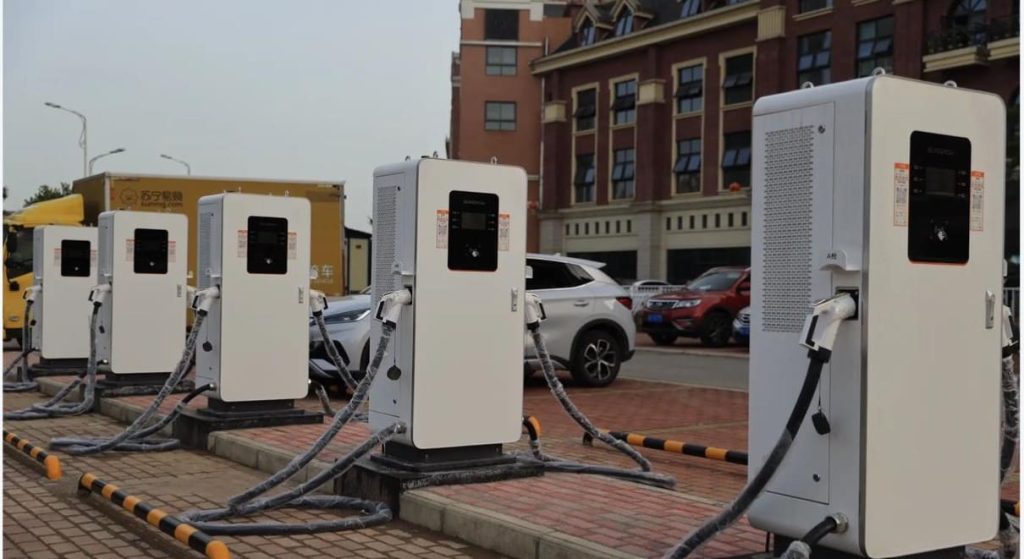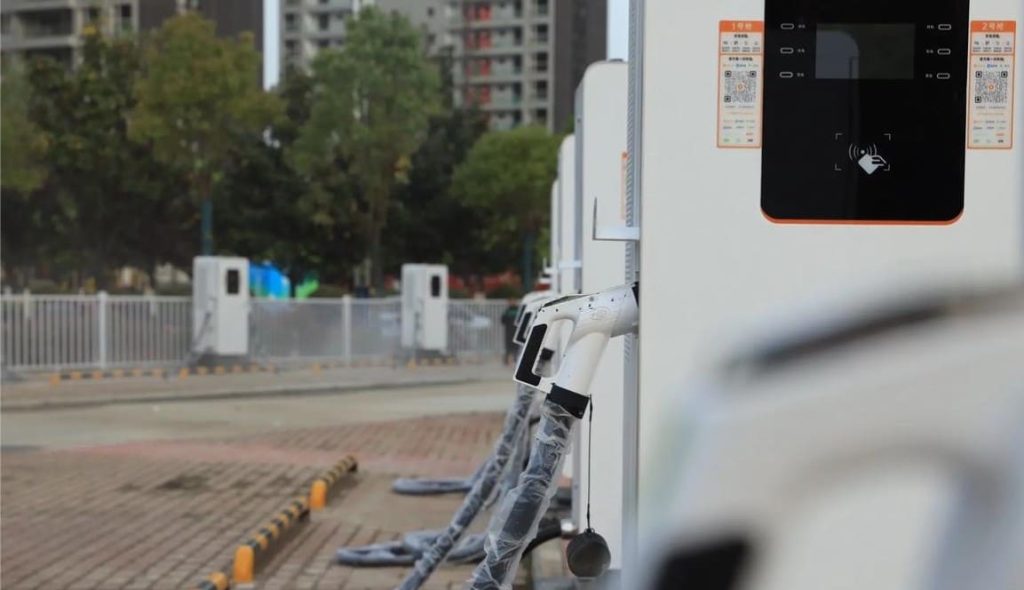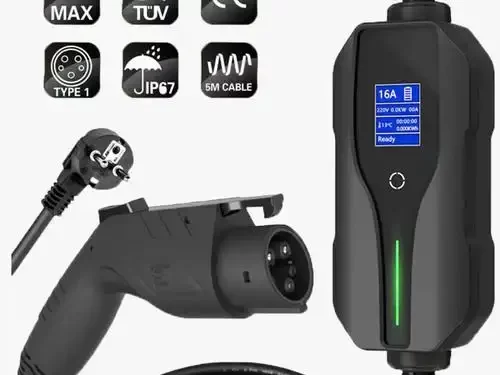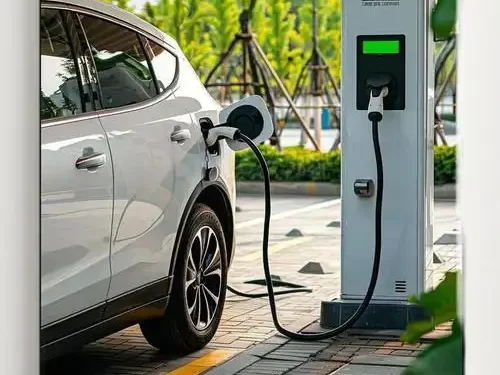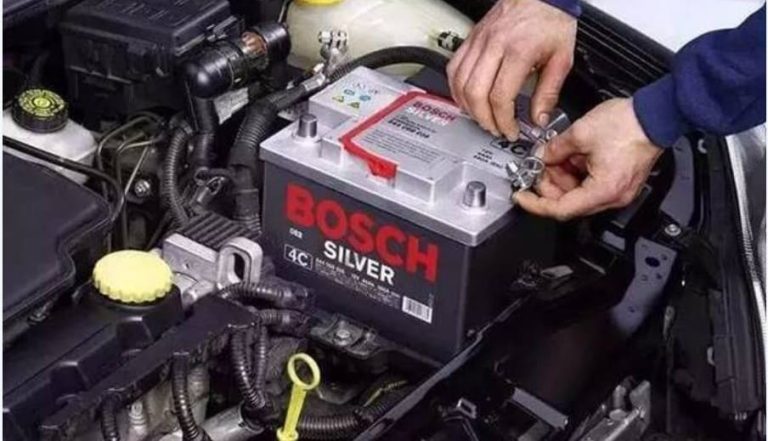Are EV Charging Stations Profitable?
[ez-toc]
Are EV Charging Stations Profitable? Absolutely, it can be.
Many individuals are curious about the profitability of charging station ventures. The prevailing concern revolves around whether this business can indeed yield profits. How can one optimize earnings? Let’s delve into this topic today!
Promising Industry Outlook
What’s the verdict? Firstly, bolstered by national policies, a wide array of locations such as residential communities, businesses, schools, and shopping centers are strongly encouraged to incorporate electric vehicle charging stations due to concentrated electric vehicle parking. The demand for such stations is substantial. Additionally, China boasts a vast electric vehicle population, nearly reaching the 400 million mark. Frequent electric vehicle charging-related incidents coupled with a charging supply that lags behind demand have created a pressing need for charging station construction. By combining these aspects, the market potential for charging stations appears exceedingly optimistic!
Assured Revenue Generation
Observing that many charging station operators are individuals, it’s apparent that engaging in this business doesn’t exclusively require being a wealthy tycoon. The relatively low entry barrier and investment costs in the charging station industry render subsequent operations comparably straightforward. It’s an accessible venture for most individuals!
Furthermore, the pricing structure for contemporary charging stations is notably transparent. A typical unit costs around 700 yuan and can charge up to 10 electric vehicles. For instance, for a residential setup of 10 units, the initial cost is approximately 7000 yuan. Accounting for subsequent installation and auxiliary material expenses, the overall installation expenditure might total around 10,000 yuan. Consequently, if a single unit generates 10 yuan in daily revenue, 10 units collectively yield 100 yuan, recouping your investment in slightly over 3 months. With an average operational lifespan of about 7 years, charging stations can continue yielding profits after breaking even, signifying substantial potential returns.
Vital Role of Brand Selection
Why do some individuals thrive in the charging station business while others fall short? A pivotal factor is the selection of the right brand. A superior charging station brand doesn’t merely guarantee product quality; it also delivers comprehensive functionality, intelligent operations, and a stable platform. These elements directly influence your returns.
Satisfied users of quality products are more likely to maximize equipment utilization. When utilization increases, profitability follows suit.
Furthermore, a reputable brand offers a stable management platform enabling real-time equipment monitoring and secure financial transactions. This alleviates concerns and streamlines efforts, affording you more time and energy to explore fresh business avenues!
While EV charging stations themselves might not yield substantial direct profits, the potential indirect revenue they can generate for businesses could present a compelling case for their viability as a sound investment. To illustrate, situating these stations in close proximity to eateries and retail hubs could attract EV owners to utilize your services while they dine or shop, fostering a mutually beneficial relationship.
As technological progress intertwines with heightened environmental awareness, new energy electric vehicles (EVs) are emerging as the pivotal trajectory for future transportation, garnering substantial attention and endorsement. To cater to the escalating charging requisites of EV users, the establishment of trustworthy, efficient, and secure charging facilities is paramount. The ensuing synthesis encapsulates fundamental prerequisites for new energy EV charging stations.
Efficient and Swift Charging Capability:
Given the limited range of electric vehicles in comparison to traditional fuel-powered counterparts, rapid charging assumes heightened significance. An imperative for charging stations is the ability to facilitate high-power, fast DC charging, thereby facilitating quick replenishment of the vehicle’s energy reserves and enhancing user convenience.
Intelligent Management and Surveillance Functions:
Embedding intelligent management systems into charging stations underscores the strategic advancement. These systems enable remote monitoring, fault diagnosis, and statistical analysis of charging equipment, amplifying operational efficiency while curbing management expenses. Moreover, users can relish enhanced experiences through app-based remote control and scheduled charging, thanks to the smart management infrastructure.
Safe and Reliable Security Mechanisms:
Given the involvement of electrical energy transmission and storage, safety assumes paramount importance during charging operations. Charging stations necessitate multi-faceted safety mechanisms including safeguards against over-current, over-voltage, and over-temperature scenarios. This proactive approach ensures the charging process remains non-hazardous for both the vehicle and the users. Compliance with national standards and certification prerequisites further guarantees the charging station’s quality and dependability.
Versatile Compatibility and Seamless Connectivity:
As the electric vehicle landscape diversifies and flourishes, charging stations should embrace expansive compatibility. Versatility in terms of supporting various standards and interfaces becomes indispensable to cater to the diverse charging needs of various EV brands and models. Furthermore, fostering connectivity with smart grids facilitates the harmonious coordination of charging equipment and energy systems, thereby optimizing energy distribution and consumption.
In essence, comprehensive new energy EV charging infrastructure necessitates efficient, swift charging capabilities, intelligent oversight and management, impregnable safety protocols, and versatile compatibility and connectivity. Embracing these bedrock principles enables a harmonious response to the charging requirements of EV users and further propels the robust evolution of the electric vehicle sector.
Amid escalating environmental consciousness, the adoption of new energy vehicles is surging, thereby propelling the rapid expansion of car charging stations. This proliferation of charging station businesses raises a crucial question: how can these establishments attract consumers and carve a distinctive niche amidst the competition? This article outlines several strategic approaches to achieve this goal, encompassing superior charging services, optimized amenities, diverse charging options, discount incentives, and more. Let’s delve into the specifics below.
To entice patrons to frequent car charging stations, the top ten brands suggest implementing the following strategies:
Deliver High-Quality Charging Services:
Prioritize the seamless operation of charging equipment, ensuring efficient charging speeds and a reliable power supply. Such assurance enables consumers to effortlessly and swiftly charge their vehicles.
Create a Comfortable Environment and Facilities:
Forge a pleasant atmosphere within the charging station, including well-lit and tidy premises, comfortable seating, and ample space. This ensures an enjoyable experience for consumers during the charging process.
Offer a Spectrum of Charging Options:
Address diverse vehicle models and user requirements by providing an array of charging options in terms of type and power capacity. Moreover, furnish convenient payment avenues such as credit card and mobile payment systems.
Enact Preferential and Discount Initiatives:
Regularly launch special offers and discounts to entice consumers to engage with the charging station. Establishing a membership system can amplify benefits for members, enhancing their loyalty.
Provide Value-Added Services:
Beyond charging, consider augmenting the consumer experience through auxiliary services like charging lounges, complimentary WiFi, or the availability of beverages and snacks, contributing to convenience and comfort.
Execute Robust Marketing Efforts:
Employ a multifaceted marketing strategy encompassing online platforms like social media, websites, and apps, as well as offline avenues such as advertisements and promotional materials. This elevates the visibility and recognition of the charging station.
Forge Partnerships with Local Entities:
Collaborate with local governments, commercial real estate developers, and parking lot operators to collaboratively advance the promotion of car charging stations, thereby leveraging additional resources and support.
Prioritize User Feedback and Enhancements:
Esteem user opinions and feedback, promptly addressing their concerns and needs. By continually refining service quality and consumer experience, overall satisfaction and word-of-mouth referrals can be elevated.
Incorporating the aforementioned strategies can effectively heighten the appeal of car charging stations, stimulating increased consumer engagement and ultimately fostering amplified business traffic and growth. Central to this approach is the commitment to providing exceptional charging services, subsequently elevating consumer satisfaction and advocacy, thereby perpetuating sustained business expansion.
Research Report: Pricing Strategies for New Energy Vehicles
The following is our comprehensive research report on pricing strategies for new energy vehicles, encompassing pertinent reference content:
Introduction
In light of escalating environmental concerns and an escalating consumer consciousness towards ecological preservation, electric and hybrid vehicles have gained prominence as a trajectory in the automotive industry. For automotive manufacturers, the task of determining the pricing for new energy vehicles has evolved into a pivotal issue. This report delves into the exploration of effective pricing strategies for new energy vehicles.
Research on Pricing Strategies for New Energy Vehicles
Market Positioning
In preparation for pricing new energy vehicles, manufacturers must accurately ascertain their market positioning. This entails identifying consumer demographics that are more inclined to purchase new energy vehicles and discerning the attributes and functionalities that carry significance for them. By catering to the diverse needs of various consumer groups, manufacturers can offer a range of new energy vehicle models and configurations, thereby addressing distinct customer preferences.
Cost Analysis
The cost of producing new energy vehicles typically surpasses that of traditional vehicles. Consequently, manufacturers must undertake a comprehensive cost analysis to ascertain an appropriate sales price that ensures profitability. The evaluation of costs encompasses research and development expenses, production outlays, marketing expenditures, and after-sales service costs.
Competitor Analysis
During the pricing deliberation for new energy vehicles, manufacturers must account for the pricing strategies of their competitors. This involves understanding the underlying principles guiding their pricing, the methodologies they employ, and how consumers react to their price points. By dissecting the pricing strategies of rivals, manufacturers can aptly determine the price threshold for their own new energy vehicles.
Analysis of Product Attributes and Supplementary Services
New energy vehicles often offer additional features and services compared to traditional automobiles. These can include charging infrastructure, battery lifespan, and enhanced safety features. While devising pricing strategies, manufacturers must factor in these elements to ascertain the intrinsic value of their new energy vehicles and subsequently determine a suitable selling price.
Pricing Strategy
After considering the above aspects, manufacturers must ascertain their overarching pricing strategy. For new energy vehicles, manufacturers can consider the following pricing strategies:
a. High Price Strategy: Employing higher prices while delivering substantial value, primarily targeting affluent consumers or corporate clients seeking enhanced services.
b. Low Price Strategy: Offering lower prices with fewer features, catering predominantly to the mass market.
c. Moderate Price Strategy: Opting for pricing that falls between the high and low strategies, thereby appealing to a wider spectrum of consumers including those with moderate incomes and businesses with constrained budgets.
Implementation of Pricing
Upon finalizing the pricing strategy, it necessitates market testing to gauge its effectiveness. Manufacturers can apply diverse pricing strategies in distinct geographical regions and market conditions to gauge the impact of these strategies on sales.
III. Conclusion
In the realm of new energy vehicles, pricing strategy emerges as a pivotal business decision. Manufacturers must acquire a profound comprehension of the market landscape, conduct an exhaustive cost analysis, and factor in competitors’ pricing approaches. Additionally, consideration of product attributes and supplementary services is paramount for formulating a suitable pricing strategy. Through these systematic steps, manufacturers can delineate a pertinent selling price range and ultimately achieve effective pricing outcomes.
Absolutely, owning an EV charging station presents a lucrative business prospect. While significant profits directly from charging might not be the primary source, you can capitalize on increased foot traffic to your establishment. With more people visiting, your selling opportunities naturally expand, creating a positive impact on your bottom line.
In the evolving landscape of burgeoning environmental consciousness, new energy vehicles are emerging as the beacon of future transportation, tapping into maximum energy utilization and facilitating a transition from oil dependency. This article endeavors to shed light on a diverse range of profit models, offering a comprehensive overview of how charging stations can harness revenue streams. As we delve into these innovative strategies, it’s apparent that the future of electric vehicles holds immense promise, signifying the convergence of technology and sustainability.
Currently, a definitive domestic charging station profit model is still elusive, and international successes remain scarce. However, the absence of a market monopoly presents a plethora of opportunities for innovative thinkers to flourish within this vibrant ecosystem. As the market blooms and diversifies, each contender has the potential to wield a novel model that leverages capital efficiently to thrive. The charging station’s indispensable role in facilitating sustainable electric vehicle growth is indisputable. As a fundamental facet of this ecosystem, a well-devised operational model is pivotal.
- Charging Service Fees:
A foundational approach involves charging users based on kilowatt-hour consumption. Guided by regulations set forth by the National Development and Reform Commission in 2014, operators can collect service fees and electricity charges from EV users. Regional variations and standardized charging rates apply, ensuring a versatile income source. - Government Subsidies:
Partnering with governmental bodies and leveraging incentive policies can foster lucrative rewards. Charging infrastructure construction and operational subsidies, dispersed by provincial and municipal authorities, catalyze growth, and provide a strong financial backing. - Electricity Cost Reduction:
Forging the path of energy storage presents the future direction for charging stations. Capitalizing on photovoltaic power generation, stations can access economical electricity rates, enhancing competitiveness. - Advertising Revenues:
Capitalizing on charging station real estate, advertising space rental on charging piles and premises can unlock consistent revenue streams. This creative approach merges consumer convenience with lucrative advertising opportunities. - Charging Platform Services:
Propelling the charging station experience, creating personalized charging platforms amplifies customer engagement. This system streamlines payment processes, enhances user loyalty, and introduces avenues for content dissemination. - Value-Added Services:
Beyond basic charging, value-added services like automatic car washing, retail spaces, and storage solutions augment revenue streams. These enhancements deepen user engagement and establish a comprehensive service hub. - Transportation Rental Services:
Addressing the last-mile conundrum, offering electric vehicle owners rental services such as electric scooters or bicycles bolsters convenience and generates added revenue. - Parking Space Operations:
Expanding into parking management and rentals, the charging station can alleviate parking scarcity woes, offering both monthly and nightly parking solutions. - Catering and Entertainment Services:
Enriching the charging station environment with supplementary services like convenience stores and entertainment spaces elevates consumer experience and fosters utilization. - Charging Network Ecosystem:
The quintessential foundation is establishing a cohesive charging network, nurturing synergies with vehicle networking and the internet. This comprehensive ecosystem integration maximizes value and profitability.
As the charging station landscape matures, the right model can transform modest investments into substantial profits. While current domestic and international reference points are sparse, the dynamic nature of this sector beckons innovators to craft effective strategies and embrace a prosperous era of electric mobility. In this blooming market, characterized by diversity and potential, the power of inventive thinking propels private enterprises and individual investors toward a promising horizon.
Today, installing electric vehicle (EV) charging stations signifies more than just adapting to the evolving transportation landscape; it’s a strategic route to not only draw in more customers but also to amplify profit margins. Below, we explore how integrating public EV charging can elevate the profitability of your existing business and establish an independent revenue stream.
Enhancing Customer Spending with EV Charging
In the competitive realm of today’s business world, innovative methods are essential to attract customers and amplify the value of each transaction. The transformation of your establishment into an EV charging destination is a streamlined approach to achieve both. This shift elevates the average duration of customer interactions by providing a cross-selling opportunity for additional products and services. Whether it’s a rideshare driver recharging during a lunch break or a sports coach topping off his battery while getting supplies for the team, the allure of EV charging draws them in.
By offering EV charging, you create an appealing reason for EV drivers to visit and spend time at your location. Depending on the charger type, charging times can range from a few minutes to a couple of hours. For establishments such as shops, restaurants, or gas stations, opting for fast (DC) charging is ideal, as it can charge even the largest EV batteries in less than an hour. However, since most EVs don’t require a full charge, a standard Level 2 (AC) solution suffices, providing approximately 25 miles of range per hour. Often, a combination of AC and DC charging stations is the optimal choice. In either scenario, by offering convenient charging, you encourage customers to spend time and money at your location during the charging process.
Attracting Customers through EV Charging Stations
Our research, conducted in collaboration with Ipsos, revealed that EV drivers tend to be more informed, affluent, and younger compared to the general population. With greater disposable income than traditional car drivers, EV owners not only spend more time at your establishment but also invest in higher-end goods and services during each visit. Moreover, they are more likely to become loyal, repeat patrons once they discover your business offers this valuable service.
According to the EY Mobility Consumer Index, 52 percent of potential car buyers are contemplating an EV for their next purchase. Securing your location as an EV charging provider positions your business as a frequented EV charging hub.
Enhancing Business Reputation through EV Charging Stations
EV charging stations not only enhance your business but also feature prominently on maps. Navigation platforms like Google Maps and Waze, alongside dedicated charging apps such as PlugShare, provide interactive maps that enable drivers to locate nearby public charging stations. By having charging stations on your premises, you bolster your brand’s visibility on these platforms, attracting new customers.
Furthermore, personalized charging stations bearing your brand colors or logo can significantly enhance your corporate image, signaling your commitment to a more sustainable future. With environmental concerns increasingly resonating with customers, installing charging stations allows you to establish your business as environmentally conscious, potentially earning you prestigious sustainability certifications like LEED, GBB, and WELL.
Generating Revenue from EV Charging Stations
Drawing in new customers, fostering brand loyalty, and extending the duration and spending of visits are all impactful outcomes of EV charging integration. However, the most direct avenue through which EV charging bolsters profitability is the revenue generated from the stations themselves. Depending on your chosen business model, charging fees can be set, and customers are often more than willing to pay for the convenience and service.
In the dynamic landscape of today’s business world, embracing EV charging stations not only modernizes your establishment but also redefines your profitability potential. By tapping into this transformative trend, you position your business for long-term growth and financial success.
EV Chargers for Sale:
ChargersGO Factory Informations
Our EV Charger Factory Introduction:
| Business Type: | Manufacturer/Factory | Main Products: | EV Charger |
| Number of Employees: | 100 | Year of Establishment: | 2014.05 |
| Production Capacity | 5000Set/Year | After-sales Service: | Technical Support; on-line teach lessons |
| R&D Capacity: | ODM, OEM | Annual Output Value: | US$5 Million – US$10 Million |
| No. of R&D Staff: | 5 | No. of Production Lines: | 6 |
ChargersGO Factory is a reputable manufacturer specializing in Electric Vehicle (EV) Chargers. Our extensive product range includes slow chargers, fast chargers, DC EV Chargers, AC EV Chargers, commercial EV Chargers, home chargers, and EV chargers of various levels, including level 1, level 2, and level 3. All our products adhere to strict China GMP design standards, ensuring top-notch quality and performance. Additionally, we take pride in securing various certifications to ensure the reliability and safety of our chargers.
Business Philosophy:
“Quality is the main policy of sales” and “integrity is the principle of success” are the business philosophy of our people. We carry out one-year warranty, lifelong maintenance service, with technical consultation and other services, and long-term supply of equipment. Welcome new and old customers to negotiate cooperation!
Production Process:
The production of an Electric Vehicle (EV) charger entails a meticulous process aimed at delivering top-notch quality, safety, and performance. It involves several essential stages:
- Design and Engineering: Expert engineers and designers collaborate to create a comprehensive blueprint for the EV charger. They consider factors like power capacity, safety features, charging protocols, and compatibility with various electric vehicle models.
- Component Sourcing: After finalizing the design, the production team sources high-quality components and materials required for the charger. These may include circuit boards, connectors, casing materials, power modules, and safety components, ensuring reliability and longevity.
- Circuit Board Assembly: The heart of the EV charger lies in its circuit board, which controls the charging process and ensures safety. Advanced Surface Mount Technology (SMT) machines precisely place electronic components on the circuit board, with certain elements carefully assembled by skilled technicians.
- Casing and Enclosure: The charger’s casing is vital for protecting against external elements and ensuring user safety. Durable materials like aluminum or robust plastics are often used, and manufacturing techniques like injection molding create the charger’s sturdy enclosure.
- Quality Control: Rigorous quality control checks are conducted throughout the production process to identify any defects or inconsistencies. Chargers undergo multiple tests to ensure functionality and safety compliance. Quality control specialists meticulously examine each unit to meet industry standards.
- Safety Testing and Certifications: Before the chargers hit the market, they undergo rigorous safety testing and certifications. Electrical safety, thermal, and environmental tests ensure the chargers can perform reliably in diverse conditions.
- Final Assembly and Packaging: Successfully passing all tests and certifications, the chargers proceed to final assembly and packaging. They are carefully packaged with user manuals and any necessary accessories.
- Distribution and Installation: The chargers are distributed to retailers, charging network operators, or directly to end customers. Upon receiving them, they are installed at charging stations or offered to electric vehicle owners for home charging.
- Customer Support and Maintenance: Manufacturers provide ongoing customer support and maintenance services to ensure the chargers continue to perform optimally. This includes troubleshooting assistance, firmware updates, and periodic inspections.
By adhering to this comprehensive production process, EV charger manufacturers ensure that their products are efficient, reliable, and safe, contributing to the broader adoption of electric vehicles and sustainable transportation.
By following a well-structured production process and adhering to strict quality standards, manufacturers can produce high-quality EV chargers that contribute to the growth of electric mobility and a greener, sustainable future.

Certifications:

Small EV Charger Packing:
Retail and Wholesale Packaging of Small EV Chargers for Shipment
Retail Small EV Charger Shipment:
For retail orders, Small EV Chargers are shipped using express shipping methods.
Wholesale Small EV Charger Shipment:
For wholesale orders, Small EV Chargers are carefully packed in export fumigation-free wooden cases, suitable for bulk shipments or container transportation.
- Packing Small EV Chargers for Sea Shipment:
When preparing Small EV Chargers for sea shipment, utmost care is taken to ensure their protection from potential damage during transit. Here are the standard steps followed by manufacturers when packing Small EV Chargers for sea shipment: - Cleaning and Drying: Prior to packing, each charger is thoroughly cleaned and dried to prevent any moisture or debris that could cause harm during transit.
- Disassembly: Where possible, the charger is disassembled into its individual components, reducing its overall size and facilitating easier packing.
- Protective Wrapping: The charger is wrapped in a layer of protective material, such as bubble wrap or foam, shielding it from scratches and potential impacts during transit.
- Sturdy Packaging: The wrapped charger is then placed into a sturdy box specifically chosen to match the charger’s size and weight. These boxes are constructed from durable materials, such as corrugated cardboard or plywood, capable of withstanding the demands of sea transportation.
- Cushioning: Adequate packing material, such as packing peanuts or air pillows, is added inside the box to provide cushioning and prevent the charger from shifting during transit.
- Secure Sealing: The box is securely sealed using high-quality packing tape, ensuring it remains tightly closed throughout the journey.
- Proper Labeling: Each box is clearly labeled with essential information, including the charger’s name, weight, destination address, and contact details.
The primary objective of these packing measures is to safeguard the Small EV Chargers from any potential damage during sea shipment, ensuring they arrive at their destination in optimal condition. Employing correct packing procedures and utilizing high-quality materials minimizes the risk of harm during the journey.
Packing a Large EV Charger for Sea Shipment: Ensuring a Safe Voyage
Packing a large EV charger for sea shipment is a meticulous and demanding process, but with meticulous planning and precision, it can be done effectively to guarantee its safe arrival at the destination. Below are the essential steps a manufacturer may undertake when preparing a large machine for sea shipment:
- Comprehensive Cleaning and Preparation: Prior to packing, the EV charger undergoes thorough cleaning and preparation. All fluids, such as oil or coolant, are drained, and any detachable parts are removed.
- Disassembly for Efficiency: If feasible, the machine is disassembled into its component parts, reducing its overall size and easing the packing process. Each part is carefully labeled and numbered for easy reassembly at the destination.
- Protection for Fragile Parts: Delicate or fragile components are meticulously wrapped in protective material, such as bubble wrap or foam, to shield them from potential damage during transit.
- Custom Crate Construction: A custom-built crate is crafted around the machine, providing a secure and robust enclosure. The crate is constructed using durable materials, like plywood, and tailored to snugly fit the machine. Braces or supports are incorporated to prevent any movement during transit.
- Cushioning Material Addition: The crate is thoughtfully filled with cushioning material, such as packing peanuts or air pillows, to offer additional protection and prevent the machine from shifting during its voyage.
- Secure Fastening: The EV charger is firmly fastened within the crate, ensuring it remains in place throughout the journey. Straps, bolts, or other reliable fasteners are utilized to hold the machine securely.
- Sealing and Clear Labeling: The crate is securely sealed using high-quality packing tape, and it is clearly labeled with essential information, including the machine’s name, weight, and relevant details. The destination address and contact information are prominently marked for easy identification.
Overall, packing a large EV charger for sea shipment demands precision and adherence to proper procedures. Employing high-quality materials and meticulous attention to detail ensures the machine’s safe and intact arrival at its intended destination. For added assurance, consulting a professional packing and shipping company can guarantee the machine is expertly packed and ready for its sea journey.


Installing an Electric Vehicle (EV) Charger requires careful planning and consideration to ensure a safe and efficient charging experience. Here is a step-by-step guide to the installation process:
- Site Assessment: The first step is to assess the site where the EV charger will be installed. Factors to consider include the proximity to the electrical panel, available space, and access to the parking area. Additionally, the electrical capacity of the property must be evaluated to ensure it can handle the charger’s power requirements.
- Selecting the Charger: Choose the appropriate EV charger based on your vehicle’s charging needs and the electrical infrastructure available at the site. There are various options, including Level 1 chargers (120-volt outlets), Level 2 chargers (240-volt outlets), and Level 3 chargers (fast DC charging stations).
- Obtaining Permits: Check local regulations and obtain any necessary permits for the installation. Some areas may require electrical permits or compliance with specific building codes.
- Electrical Panel Upgrades (if required): Depending on the chosen charger and the available electrical capacity, an electrical panel upgrade may be necessary to accommodate the charger’s power requirements. A licensed electrician can help with this process.
- Running Wiring and Cabling: Properly run the required wiring and cabling from the electrical panel to the charging location. It’s essential to use appropriate cable gauges and follow safety standards to ensure the charger receives the correct power supply.
- Mounting the Charger: Securely mount the EV charger on the wall or a suitable stand, ensuring it is positioned at the desired charging location and easily accessible for EV owners.
- Connecting the Charger: Carefully connect the charger to the wiring and cabling, following the manufacturer’s instructions and safety guidelines. Double-check all connections for accuracy and tightness.
- Testing and Activation: Before commissioning the charger, perform thorough testing to ensure it functions correctly and safely. Test the charger with an electric vehicle to ensure it can initiate and complete the charging process.
- User Training: If the EV charger is part of a public or shared charging station, provide user instructions and any necessary training to ensure users can operate the charger correctly.
- Signage and Markings: Install appropriate signage and markings to indicate the EV charging station’s location and any usage instructions.
- Ongoing Maintenance: Regularly inspect and maintain the EV charger to ensure it remains in optimal working condition. Periodic inspections by a qualified technician can help identify and address any potential issues promptly.
It is crucial to have a licensed electrician perform the installation to ensure compliance with electrical codes and safety standards. Additionally, some EV charger manufacturers offer professional installation services, which can provide peace of mind and ensure a smooth and trouble-free installation process.

Applications of EV Charger:
- Highway and Travel Routes: Level 3 chargers are strategically placed along highways and major travel routes to offer EV drivers the ability to quickly recharge their vehicles during long trips. This helps alleviate range anxiety and encourages EV adoption for long-distance travel.
- Urban Charging Hubs: Level 3 chargers are often installed in urban areas, city centers, and public parking lots. These locations cater to drivers who need to recharge their vehicles quickly while running errands or during short stops.
- Commercial Fleets: Businesses with electric vehicle fleets benefit from Level 3 chargers, as they allow multiple vehicles to be rapidly charged, enabling efficient operation without prolonged downtime.
- Public Charging Stations: Level 3 chargers are a valuable addition to public charging networks, providing a convenient option for EV drivers who require fast charging while shopping, dining, or engaging in other activities.
- Transit Stations: Charging stations equipped with Level 3 chargers can be found at transit stations, providing rapid charging solutions for electric buses, shuttles, and other forms of electric public transportation.
- Fast-Charging Corridors: Some regions establish fast-charging corridors equipped with Level 3 chargers to facilitate long-distance travel for EV drivers, encouraging intercity and interstate journeys.
- Airports: Airports often install Level 3 chargers in their parking facilities to cater to travelers who require quick charging upon arriving or before departing.
- Hotel and Lodging Facilities: Hotels and lodging facilities may offer Level 3 chargers to accommodate guests with electric vehicles who need a fast recharge during their stay.
- Rental Car Services: Car rental companies can incorporate Level 3 chargers into their fleets to ensure that rented electric vehicles are promptly recharged for the next customer.
- Workplace Charging: Some workplaces install Level 3 chargers to provide employees with the option of a fast charge during working hours, supporting their EV adoption.
In essence, Level 3 EV chargers are vital for scenarios where EVs need to be charged quickly and efficiently to meet the demands of busy individuals, travelers, commercial operators, and public transportation services.
It is appplicable for all kinds of charing protocols, Suitable for all kinds of new energy vehicles on the market,Applicable to a variety of electric vehicles, electric buses,Forklift,golf cartsightseeing cartractor, etc.
| CHAdeMO | Nissan leaf&NV200, KIA soul, CITRONEN C-Zero%Bendingo, Peu geot On, Mitsubishi l-Mev&outlander, Geely TX electric Taxi,Zero Motorcycles, Tesla Mode S(need adapter) |
| CCS | BMW i3,VW e-golf&e-up, Jaguar ipace, Tesla model 3, Hyundai ioniq&kona, Audi e-tron, OPEL ampere e, Chevrolet spark, Geely TX electric Taxi,Ford focus, Renault new Zoe |
| GB/T | BYD, BAIC,Chery, Geely, Aion S, MG, Xiao Peng, JAC, Zotype etc. |
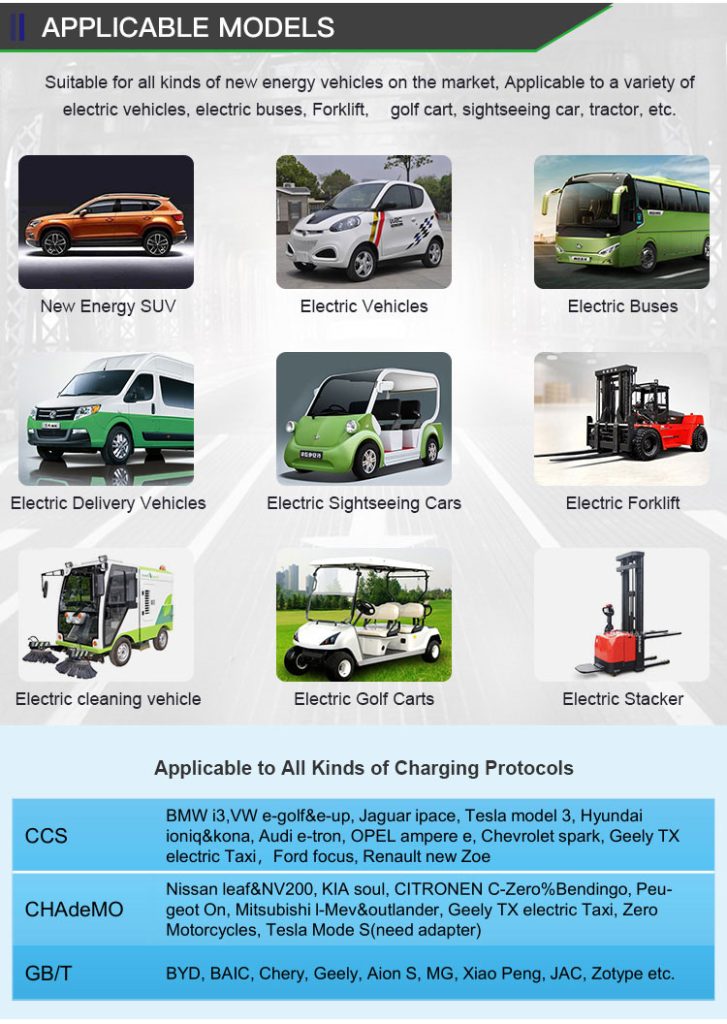
EV Charger Wholesale Manufacturer In China
Charging an Electric Vehicle (EV) involves refilling the energy stored in the EV’s battery. This is done by connecting the EV to a charging station or charger. ChargersGO is the manufacturer and wholesaler for EV Charger. Please feel free to contact with us.



